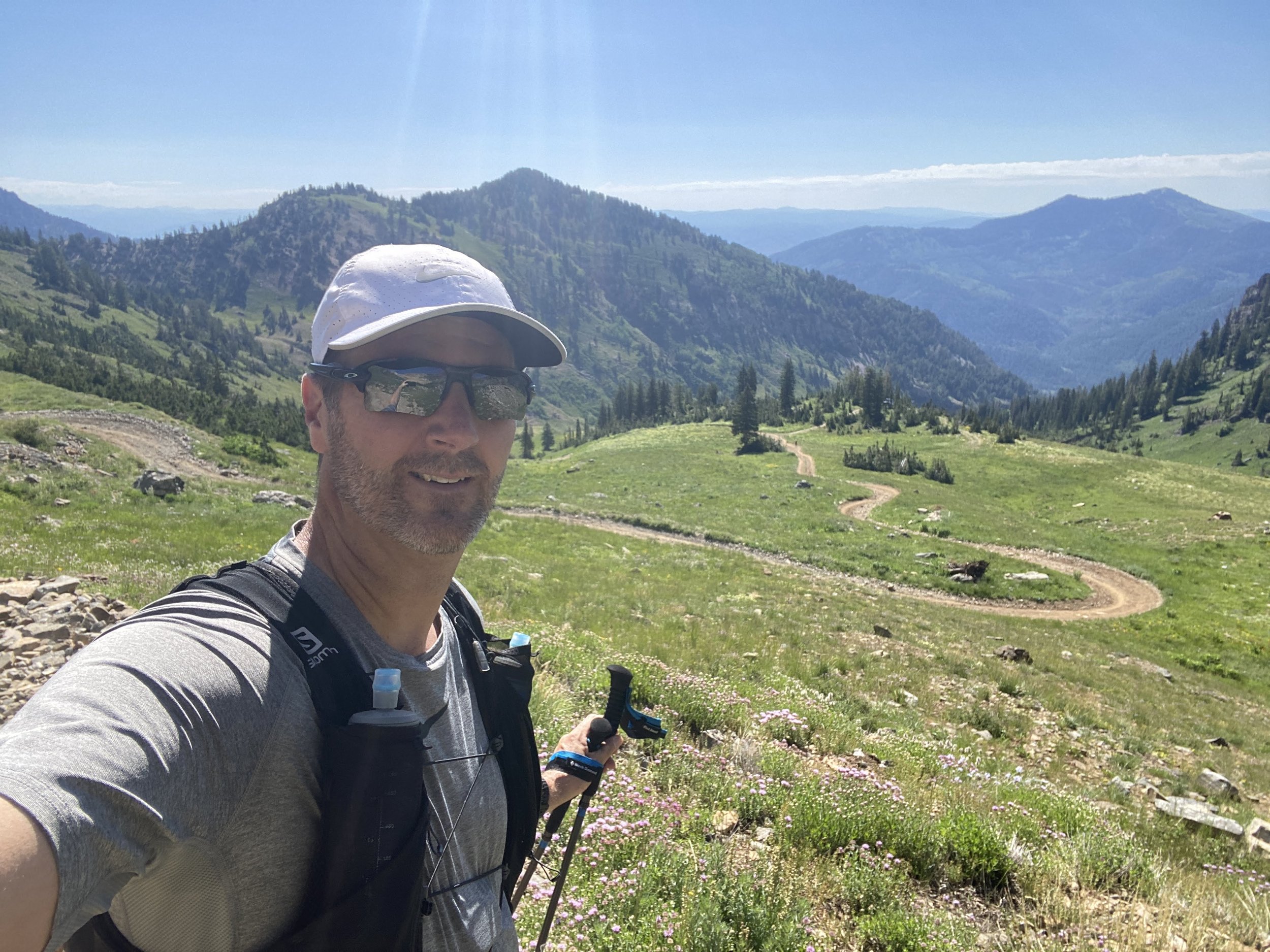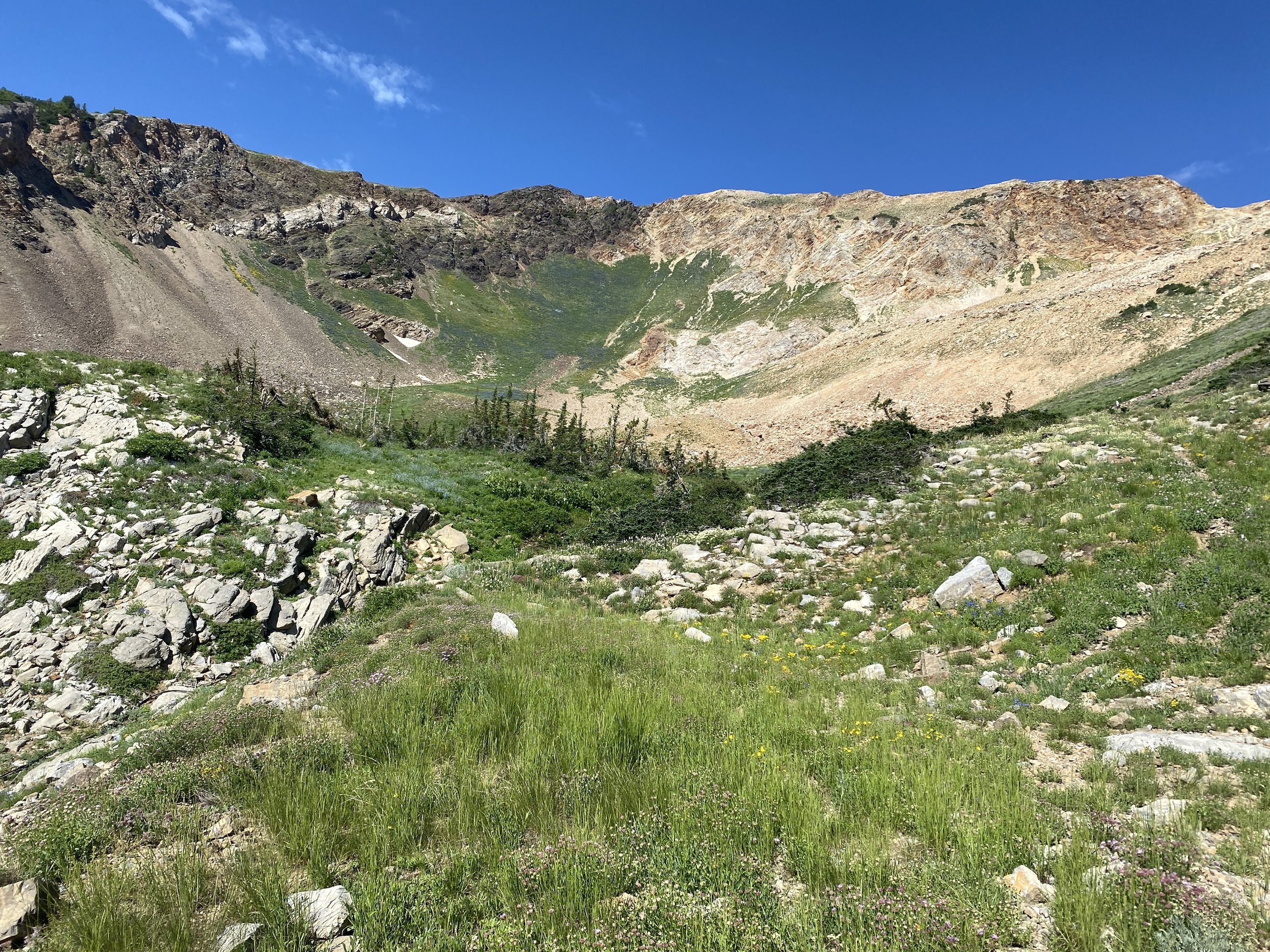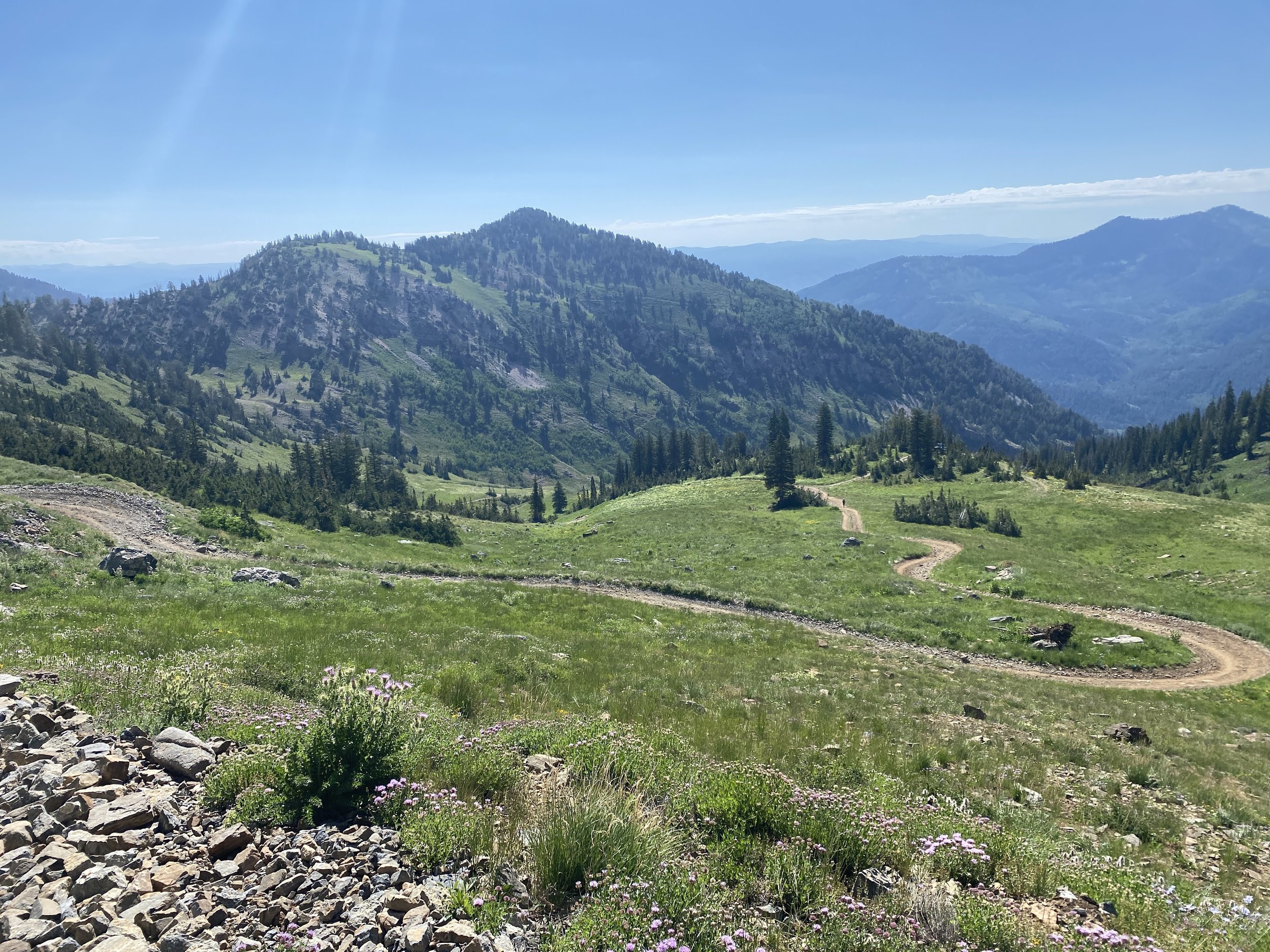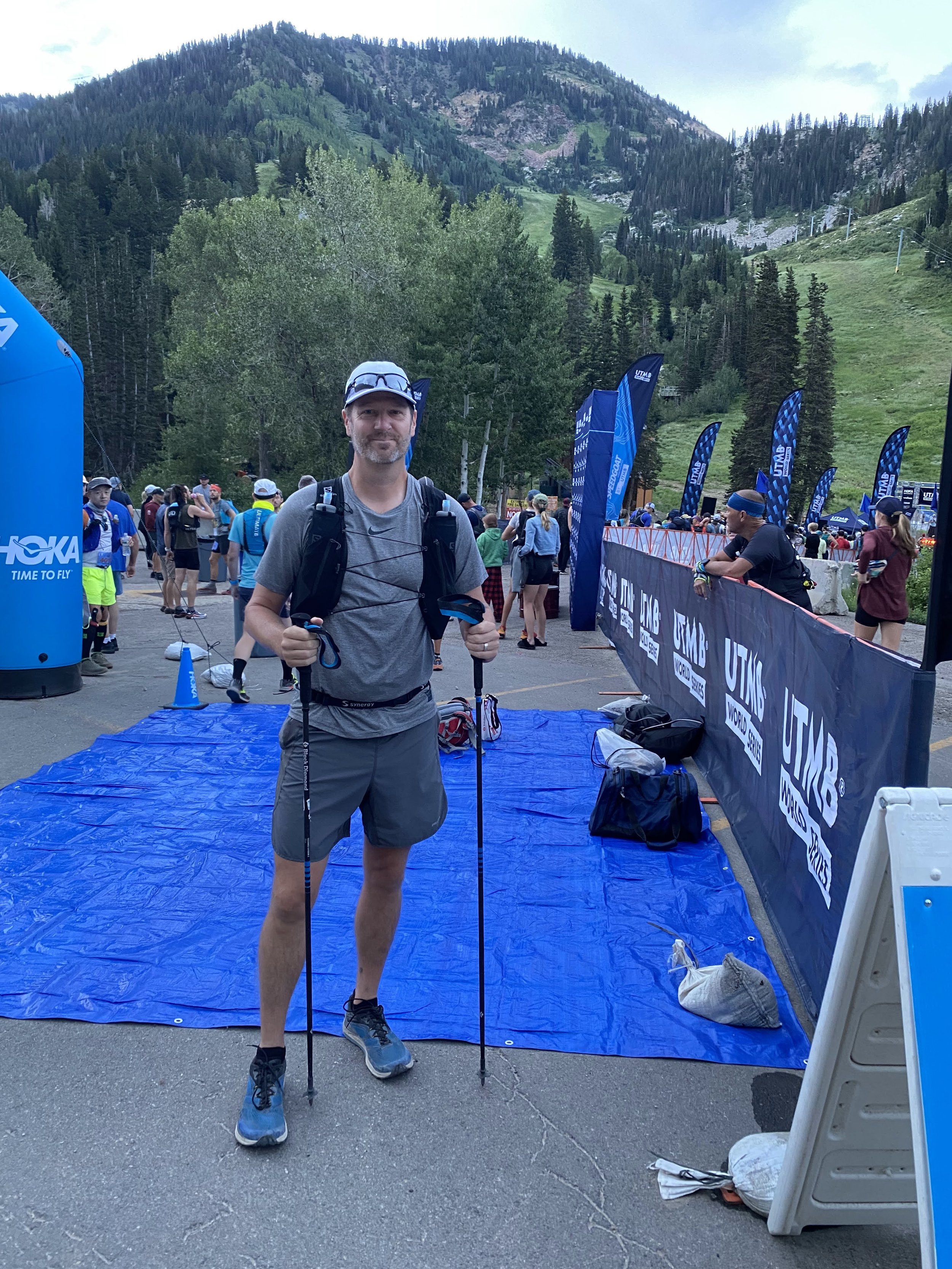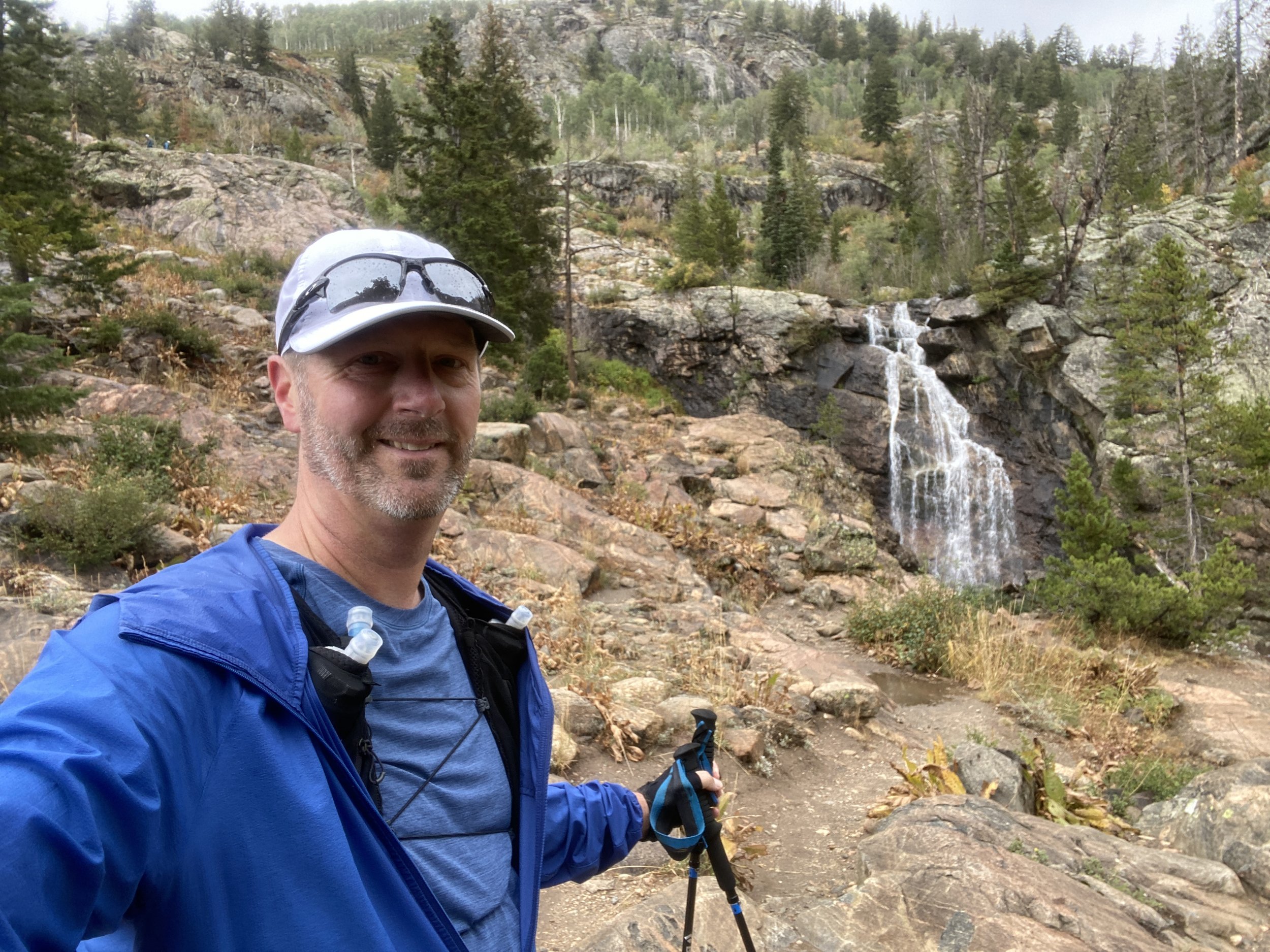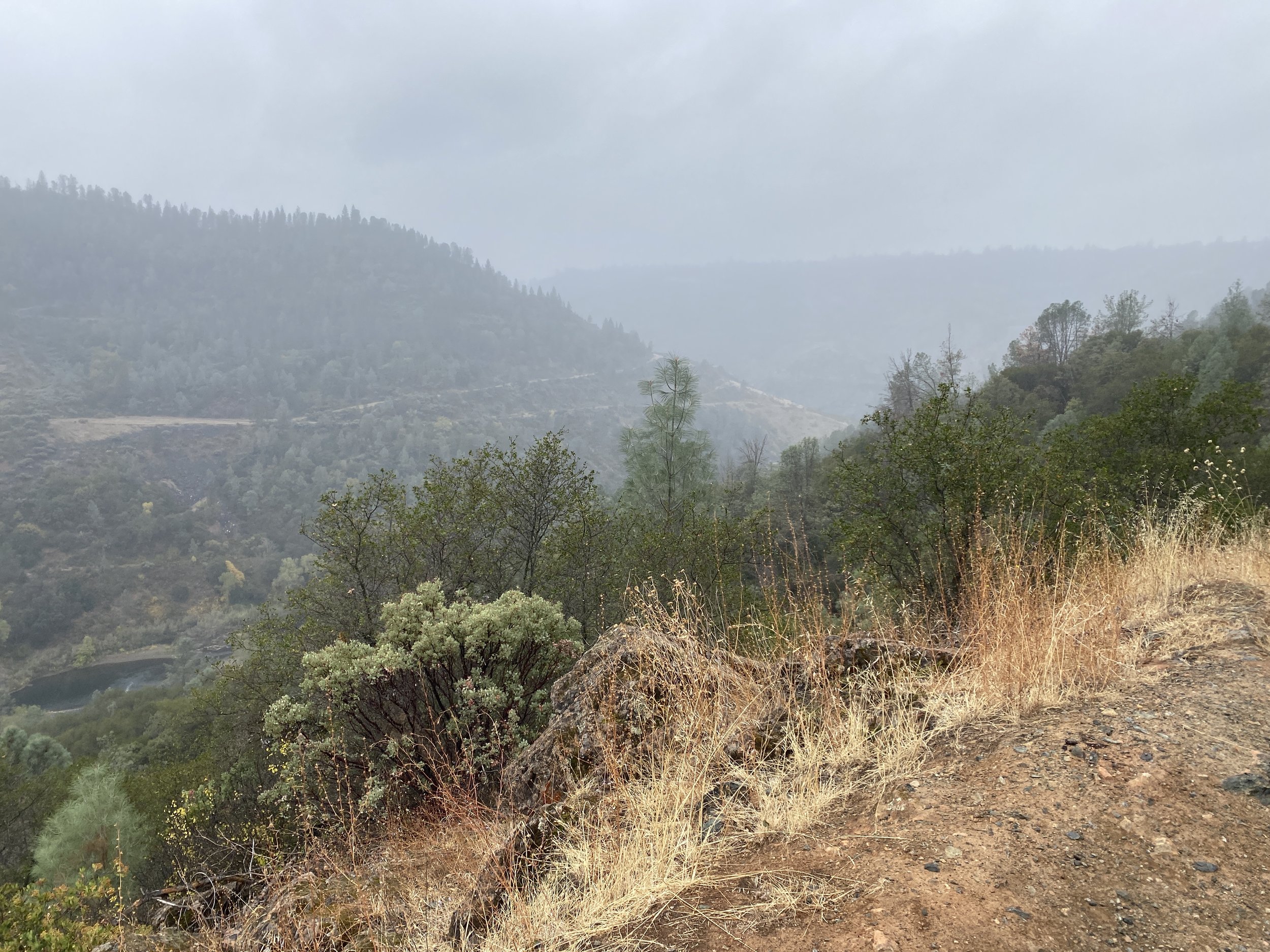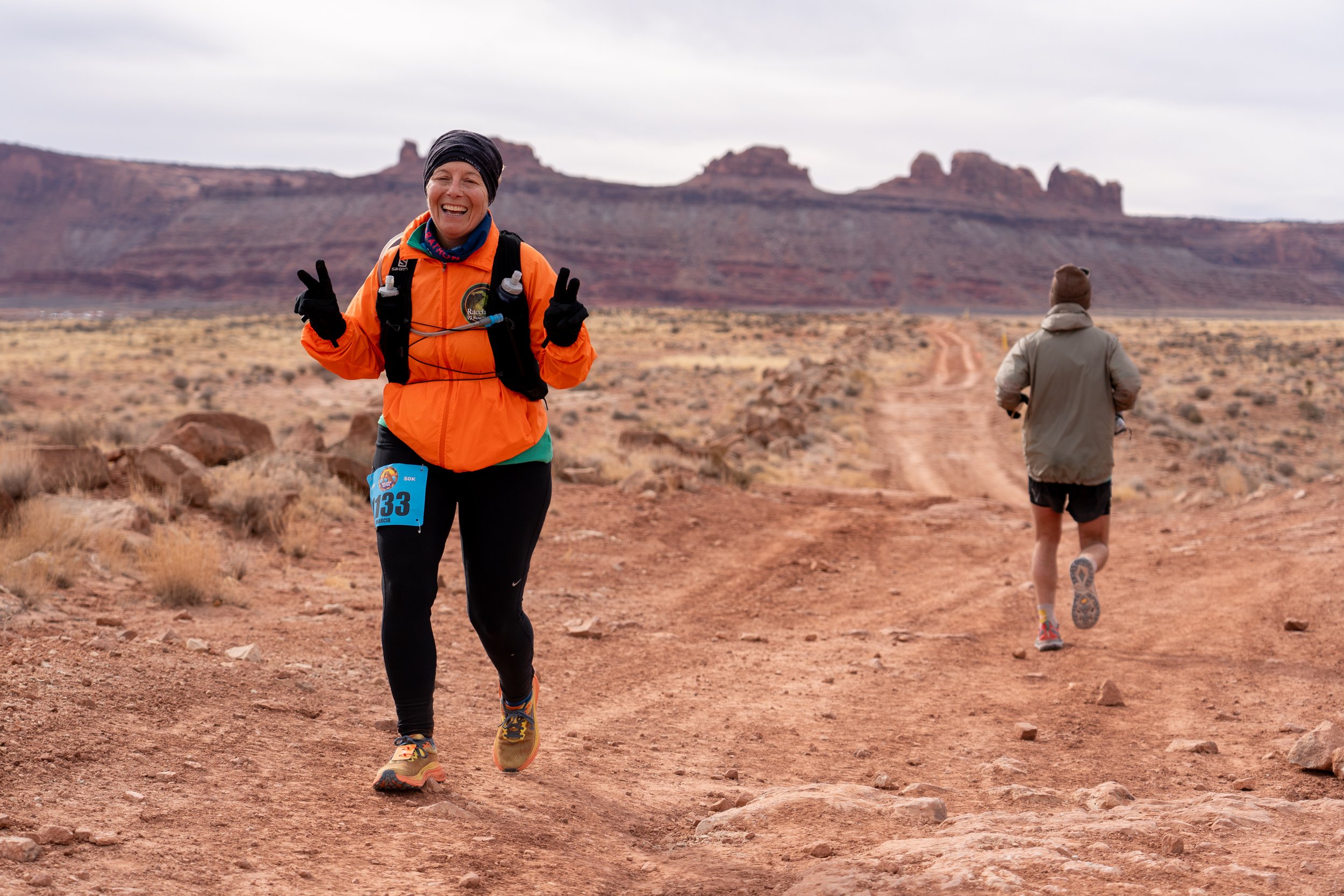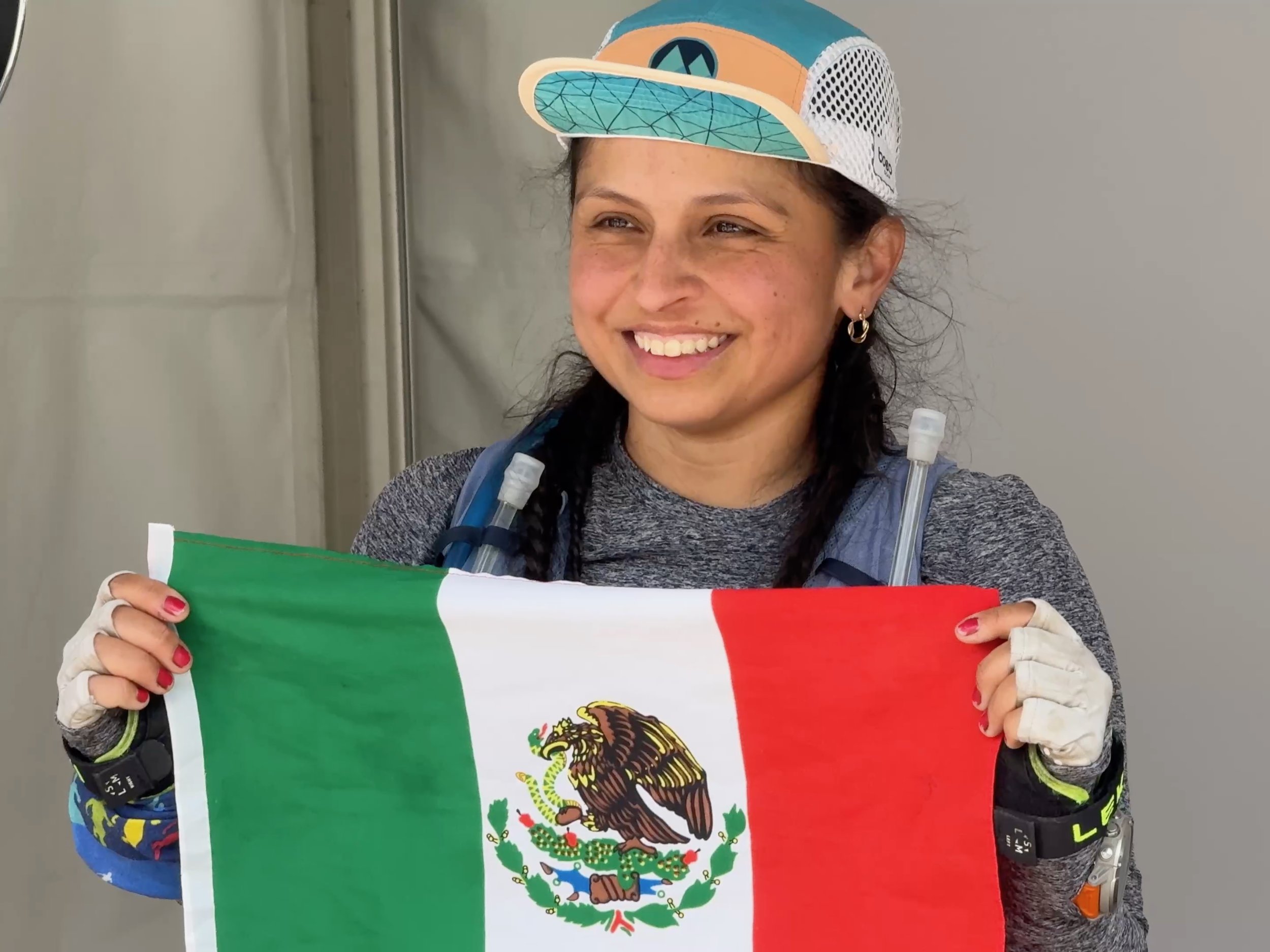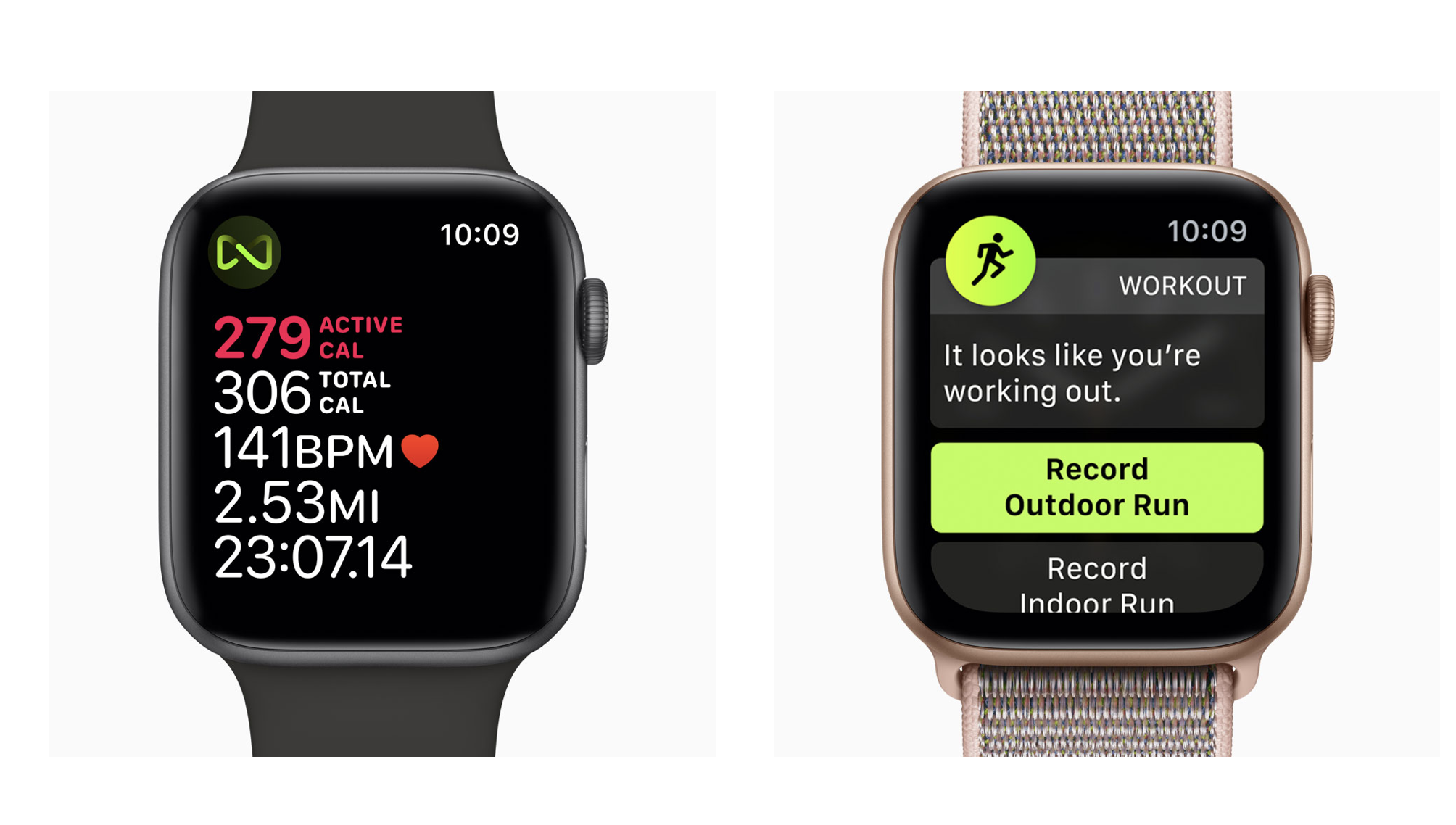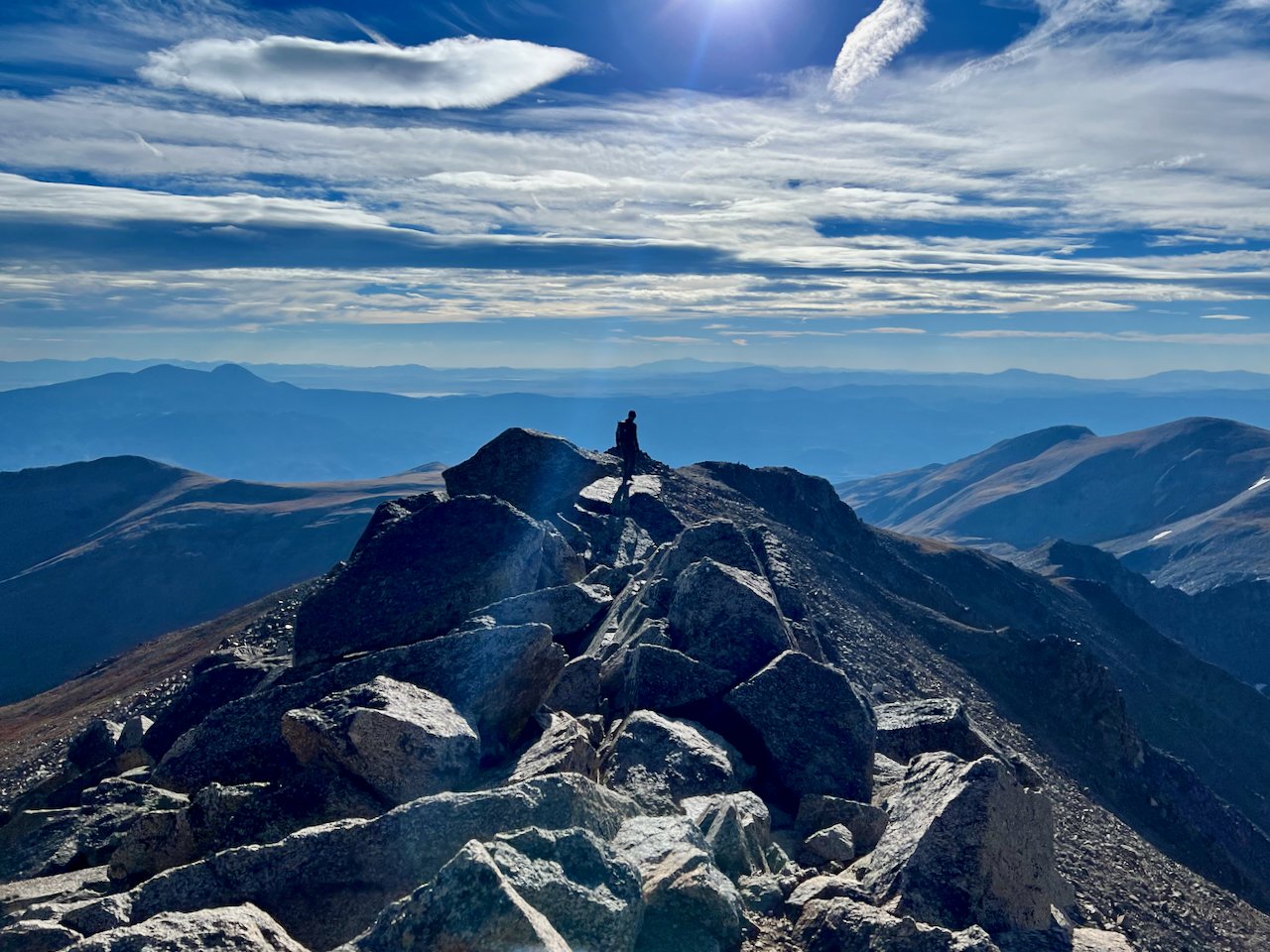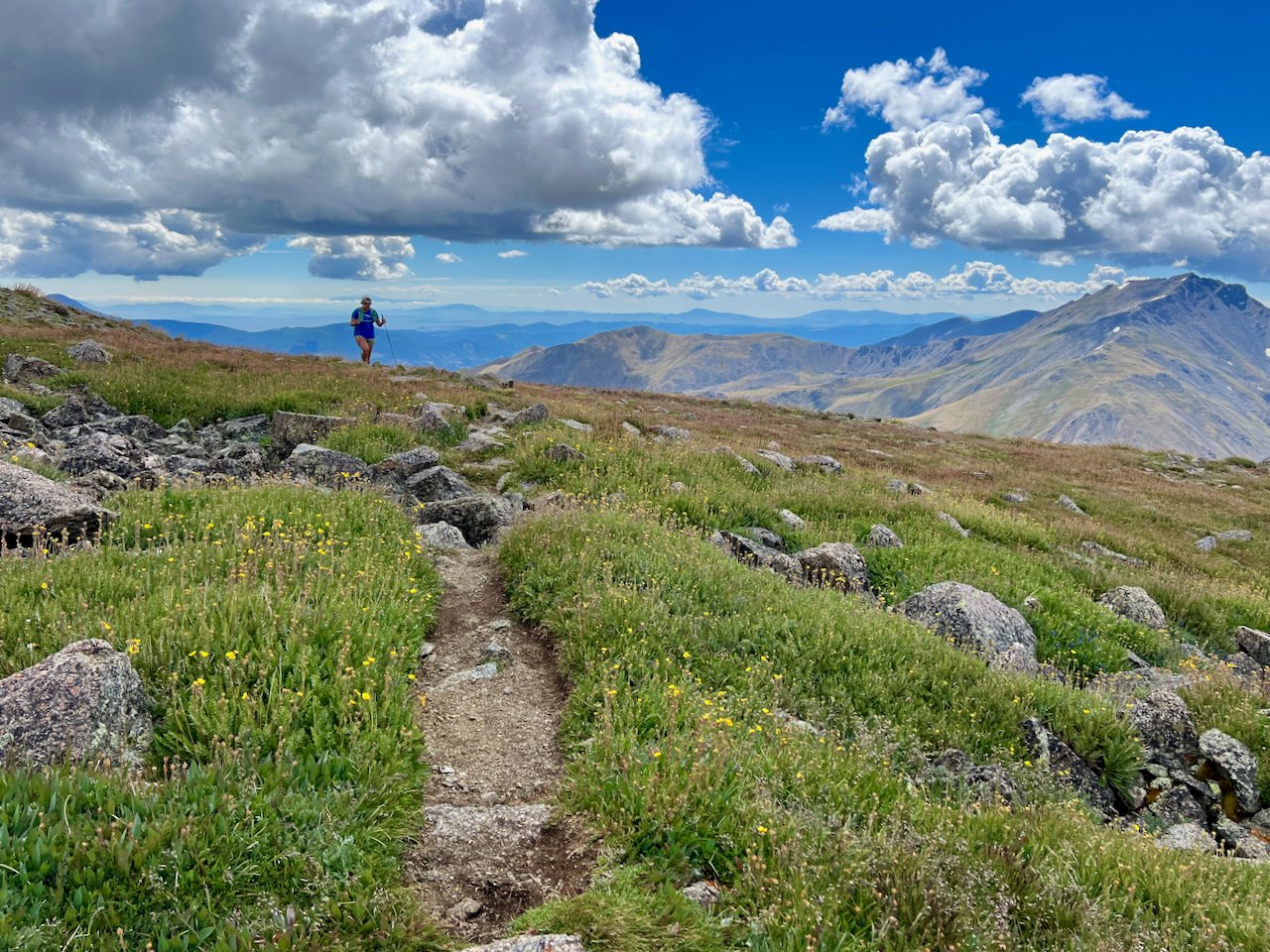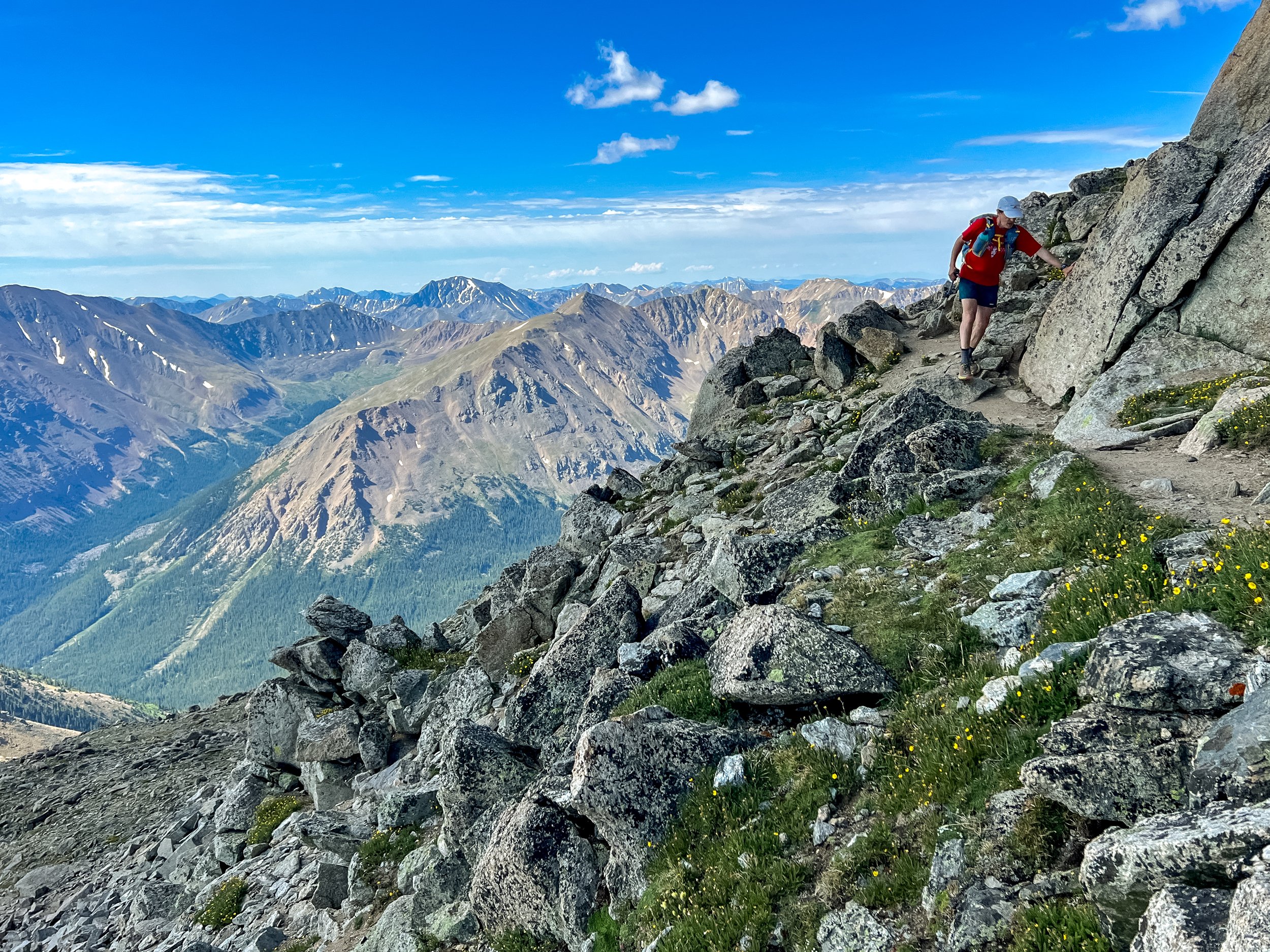“It’s Not Always Sunshine & Rainbows” My Journey to a 100 Mile Finish by MPF Athlete Dave Williams
There’s something about being self-sufficient in the mountains I find really alluring. It’s a call to the wild. It’s a connection with nature. The mountains are a playground and a proving ground. And I wanted to explore. I intended to become a mountain runner with the fitness and strength it requires, as well as the intelligence and experience to navigate and judge safety.
More specifically I wanted to run a 100 mile mountain ultra which had been on my bucket list for many years. The timing seemed right - my kids were out of the house, my wife and I completed a move from Minnesota to Utah the prior year, and my wife, who has qualified for Boston multiple times, was willing to train with me.
So, In October of 2021 I committed to it. I spoke with multiple potential coaches and decided to work with Elizabeth. Her east coast accent told me she wouldn’t be influenced by what I wanted to hear and would have the fortitude to tell me when my ideas weren’t good ones. (Case in point – she correctly told me I wasn’t ready to run a 50 miler scheduled for four weeks after we started working together. Many runners needed to be rescued due to a surprise snowstorm that day.)
My first choice for a 100 was the Wasatch 100 which starts close and finishes even closer to home. I also entered Run Rabbit Run 100 as a back-up option since it didn’t have qualification requirements or a lottery. I wasn’t lucky enough to get selected in the Wasatch 100 lottery so I set my sights on RRR100 planned for mid-September.
Background
Endurance sports have been my preferred hobby for over 20 years. Whether triathlon, road marathons or trail 50s, I enjoy pushing myself and seeing new courses.
Minneapolis, MN was home and the most challenging local 50 miler was up on the north shore of Lake Superior, the Superior Fall 50. I entered in 2014 but missed a cutoff at mile 39. (I also entered the next year but didn’t start because I forgot my shoes on the wrong side of the 5 hour drive to the race.)
Side stitches were my kryptonite for many years, the cause of which I figured was having too much in my stomach. I reasoned that limiting my consumption of food and water during runs would help. This is a great example of a misunderstanding leading to a bad decision.
Living in Minneapolis meant that finding hills on which to train was a challenge. Power output when running or cycling was never one of my strengths.
In late 2017 I experienced what felt like a calf strain on a run. The pain moved up into my glute over a period of weeks and led to surgery and recovery. I had a microdiscectomy (i.e., a small part of my spine removed) early the next year which relieved the pain.
I hadn’t been able to return to running at the speed, distance or level of effort I had been at before the injury.
Early Season niggle
After a Thanksgiving road half marathon in 2021, the next race on my schedule was in late January 2022. Unfortunately, I developed some pain in my groin which slowed me down for a few weeks and caused me to miss that race and a chance to meet Elizabeth in person. It was also a needed lesson in just how important stretching and warm-ups are. Training for a 100 miler is serious business and I learned I needed to take the supporting activities seriously.
During my initial online meeting with Elizabeth, she put me through a FMS movement screen. This gave her more information about my strength and mobility. Elizabeth then created a strength & mobility routine to address what she saw. We focused on core strength such as bird dogs, dead bugs and various movements. At the time I was experiencing intermittent back pain due to my partial disc removal especially when traveling. By doing these movements I was able to move with less to no pain at times. As I got stronger these movements progressed to harder exercises. But due to my microdiscectomy (partial spine removed), a medical professional was needed at times.
Going to the Doctor
Another lesson I learned in training is how important a team of support is. I obviously understood the importance of a coach.I quickly realized how important is was to find a good doctor as well. I lacked confidence in doctors and physical therapists after not feeling like I had recovered from back surgery. I needed direction from both my wife and Elizabeth to finally seek one out.
After not being impressed with the first physical therapist I tried (the assistants coming into my room while eating snacks, really??). Elizabeth, using the FMS search engine, found a sports chiropractor in my area with SFMA plus FMS 1 & 2. He ended up being a tremendous help over the year. He’s a good follow on Instagram, @therunnersfix. I visited him close to 20 times this year!
Behind the Rocks 50k
My next race was the Behind the Rocks 50k in Moab, UT. The course took runners through some slick rock and desert sand just outside of Moab. The scenery is classic, beautiful Moab – red rocks, some sparse green shrubs, and off in the distance the snow-capped La Sal mountains.
Finishing was my main goal, which I accomplished. However, at about mile 17 I developed a side stitch that prevented me from running the second half. The last 5 – 6 miles were rough in the desert dryness and solitude, fighting through a bonk and painful side stitch. In the end, I could not fathom running another 70 miles.
Timp Trail Marathon. Learning and trying to embrace that I HAVE TO EAT MORE!
In May I drove five miles to the start of the Mt.Timpanogos Trail Marathon, the course of which is in the foothills of the Wasatch mountains where I do most of my training. Despite only living in Utah for two years I’ve logged many miles on these trails. I love this course and this race.
I didn’t love how I felt the last 7 miles. I thought I was paying closer attention to my nutrition, but I bonked big-time by mile 19. The seemingly never-ending climb combined with the too-little water I drank added up to a feeling of wanting to quit working toward my goal. I staggered across the finish line, made the short drive home and confessed to my neighbor that it was one of the worst races of my life.
Admittedly, I took it further than that – I was very hard on myself. Not only did I seriously question if I had enough to run a 100, but I also questioned if I was ever going to accomplish a big goal of any sort. I questioned if I was worthy of my friends, my family and my job. In texts after the race Elizabeth picked up on my mood and we talked. She told me not to take it so hard – this is supposed to be fun after all - to get some food and rest for the remainder of the day.
I helped myself to some leftovers and immediately felt better. Eureka! It was a very clear lesson on the importance of food to not only my performance but to my mood and outlook.
Gear
When I started training with Elizabeth, I had minimal gear besides trail shoes and running clothes. I ended up investing in snowshoes, a Solomon pack, Black Diamond poles, adjustable dumbbells, a couple of kettlebells, and a weight bench. I have a triathlon background, having completed the Ironman Wisconsin in 2010, and understood how important gear is to that sport. I had to learn how important it is to ultrarunning as well.
Mid-Season niggle
For ten Wednesday evenings during the summer is a series of trail runs at various ski resorts and other rugged trails. My wife and I try to do as many of the races as we can to add some variety to the trails we traverse. I ended up straining a calf over two miles into one race and limping back down to the start. Dr. Reheisse treated it aggressively with dry needling and a prescription for foam rolling five times per day. In what seemed like a miracle, I was fine to run my first 50 miler ten days later.
Squaw Peak 50 Mile
The Squaw Peak 50 miler scares me. The website looks outdated. Course information is limited. The mountains behind Provo, UT are remote, rugged and over-grown in places. The race starts at 5 am, with an option to start at 4, which signals that this is a serious race. Plus, the disclaimer on the website that this is one of the most difficult 50 milers in the country. Despite all that – it was harder than I expected.
The good folks at the mile 33.5 aid station put me out of my misery. I hadn’t made it in time to continue onto the hardest section of the course. The last couple of miles of my race were miserable – hot and exposed, steep and rocky, and I hadn’t eaten or drank enough. I was barely able to muster the will to get to mile 33.5. Thankfully a few other runners were held up there to commiserate with.
Again I hadn’t eaten enough…and I even tried this time! It didn’t help that one of my drop bags was delivered two aid stations further than planned due to the roads being too bad that year. I simply didn’t prioritize eating enough. Ultra mountain running consumes much more energy than my past sports.
Self-Supported Fifty Miler
Two weeks later Elizabeth created another opportunity to run fifty miles in a day. She chose the distance and elevation, I chose the route. I created a course on trails I had never seen. The route consisted of three joining loops with a cache of food and water between the first and second loops and a car, with a trail buddy, between the second and third loops.
After running solo for the first third I had visions of sending a celebratory email to Elizabeth, claiming redemption from after Squaw Peak. My wife joined me for the second third, much of which was on the Wasatch 100 course traveling in reverse from the race’s Big Mountain aid station. Fifteen miles into this section the wheels came off. I ran out of water and struggled up the last two miles back to the car, saved by the good sense my wife had in packing extra water.
I sat in the car, trying to rest and refuel. Except that the car was uncomfortable and the soup and oatmeal that we packed were unappetizing. I dreaded continuing the run. I developed a disdain for running. Running a 100 miles after feeling utterly defeated after running 35 by that point was unimaginable. Anger, frustration, and shame seemed to be coursing through my veins where calories and water should have been. How in the world is this supposed to be fun?
I picked up the pieces of what appeared to be a shattered dream of running a 100 from the hot asphalt of the parking lot and trodded onward. I got a mental boost from Elizabeth’s text asking if I was still moving - it helped knowing someone was thinking about me. Though I ran barely a step for 13 miles until I saw a bench that I used to rest, mix more Tailwind and call my wife with a whimper. She kept me company via the phone for the remaining 7 miles until mercifully I made it back to the car completing a 53.7 mile day.
Working with a Nutritionist
At this point in the year I decided to get help from a nutritionist. Of course Elizabeth gave me many guidelines, but I needed someone to cut through all the conflicting information, someone to do the math for me, someone to be a lifeline for me on all things running nutrition. From working with Wilfredo Benitez at On Pace Wellness I learned that:
I need around 300 calories an hour.
I need 22 oz of water an hour.
My long-term problem with side stitches are likely caused from breathing, not eating or drinking.
Speedgoat 50k
The next race on my calendar was a classic mountain ultra, though newly acquired by UTMB. The Speedgoat 50k was started and run by Karl Metzler and is hosted at the Snowbird ski resort in Utah’s Wasatch range. This course was on a whole other level of beauty, technicality, and difficulty. This isn’t just a 300-level course, referring to the notation colleges use to categorize upper-level classes. This is a professional-level course.
So professional, they ran a chair lift to help those of us who missed a cutoff at mile 21 to get back to the top of the mountain to then take the gondola down.
Oops, I did it again. I fizzled out and I faded away. I plopped down and I pooped out. Doggonit, I bonked again. I just couldn’t bring myself to run or climb with any urgency. But a new (and improved!) mistake I made was reading the elevation on my watch wrong. At one point I saw I was at about 10,500 feet on my watch and misinterpreted it to be how much I had climbed. When I later realized I had 6000+ more feet of climbing, instead of 2500 feet remaining, I was devastated and I never recovered mentally.
I got serious after this run to find real food that works for me. I needed something more than pb&j sandwiches, pb filled pretzels, Spring gels, Honey Stinger waffles, and Tailwind. I ended up really liking tortillas with cold cuts, Trader Joe's roasted pumpkin seeds, Mamma Chai applesauce and chia seed packets and Core Power protein milk.
Mid Mountain Trail Marathon
We added a late-season organized trail marathon, the Mid Mountain trail marathon in Park City, Utah. This was a point-to-point course with friendly trails and more descent than ascent. It was a cool, rainy day. While I didn’t bonk, I didn’t finish particularly strongly.
I can’t call the day a success though because my wife broke her ankle and amazingly still finished. She ended up avoiding surgery but needed to be in a boot for a couple of months. Her recovery overlapped with RRR100 and plans for her to run the last section with me were erased. It added a level of challenge to her being my crew chief for the 100.
Run Rabbit Run 100 Mile
Finally, it was time for the big kahuna on my schedule, the Run Rabbit Run 100 with over 20,000 feet of elevation gain and loss. I had a lot of support for this race, I had talked to my family, friends, and coworkers about it. I recruited my step-son to pace me and his girlfriend to help at aid stations. I had even made a weekend trip out to see parts of the course. I had watched, and re-watched, any YouTube video about the race I could find. I had a spreadsheet with my expected times calculated, my nutrition needs, and gear changes. I had another document with information about the course pulled from the race website, Gaia, AllTrails, and TrailForks, among others.
In the weeks leading up to the race, the forecast waffled about the likelihood of rain. I decided to set my mind to the reality it was going to rain. I tried to embrace it, though I’m unsure if I convinced myself that the rain was a good thing. It was beautiful at the 8 am race start – blue skies and sun. After only an hour, while going up the first 3500 foot climb, the clouds and fog rolled in from behind us with a chill and stayed with us for most of the day. I put on and took off my rain jacket more times during the race than I had all summer. I didn’t dare to demand that the clouds make up their mind for fear that the sporadic sleet and thunder would be more consistent.
I took it segment by segment, aid station by aid station, and had little sense of how far I had gone in total. It was too early to think about how far I had remaining. However, I was looking forward to seeing my wife at mile 44.5 for the first time since the start. At mile 30 it got cold which combined with the rain and sleet stole some of my enjoyment. My hands were a problem, they were cold and wet. I often forget to drink while it’s raining and it was very hard to eat with cold, stiff hands.
Aid station volunteers refilled my Tailwind at mile 30 and I suspect they gave me the caffeinated version, though I asked for non-caffeine. A mile or two later I had a major runner’s high. I felt great! I also had to pee which was encouraging – maybe I had been drinking enough! Then I had to urgently pee a couple of more times which, coupled with my good mood caused me to wonder if it was due to some caffeine. Ugh, eventually I had to hide in the wet foliage off the trail – easier because it was pitch dark – and use the TP I thankfully packed. I also started to worry that what (mood) goes up, must come down. Maybe I was going to crash right when I picked up my first pacer.
I saw my wonderful crew at mile 44, sat for a bit to eat and couldn’t hold a cup of broth since I was shivering so badly. My pacer and I walked most of the descent to the 52-mile aid station. I tried to run but my head couldn’t convince my legs to keep going. The lower elevation brought a lower air temp, but my legs were sore and tired. My “want to” was slowly being replaced with my “who gives a hoot”.
At the aid station, I asked for help with my blisters since I didn’t know how to treat them. I switched into tights and put on a warmer long-sleeve shirt. After about an hour of a slow trip through the aid station I decided to continue.
Miles 53 and 54 are uphill into the dark abyss. We were heading towards a trail named “Lane of Pain” with a break at an aid station described as “minimal”. The reward for this 13 mile stretch? Another stop at the aid station I had just left. And then… AND THEN?!?!? And then the hardest part of the course! After leaving the same aid station again at mile whatever the f*, it would have been 1 million miles until the next aid station and the equivalent elevation as it is to the moon. Or so I thought.
Having fought my bad attitude for a mile a half from the aid station, I threw in the towel. My pacer convinced me to keep going just a little bit further, enough to establish a personal best on distance, in his evil plot to trick me into finishing the race. But I just didn’t want to go any farther.
So, I quit.
And the pain of that decision lingered for weeks.
I also learned other lessons that day (and night):
I had relied on food at aid stations, but since I was intentionally slow, they ran out of the waffles I was counting on.
For the first time in my life, I developed painful blisters on my feet that I didn’t know how to treat.
My crew and pacer were wonderful, but since it was their first time, they didn’t know how firm/commanding they needed to be.
Perhaps most significantly, I don’t know that I ever believed I would finish the run. I intended to. I wanted to. I hoped to. I just don’t know that I believed I would.
Looking Ahead
As soon as later the same day that I decided to stop running (it was after midnight when I stopped) I realized my physical condition was fine. Fatigued, but fine. I had more in me. My wife made me promise I wouldn’t make any running commitments for two weeks, but it took me only a few days before I decided to make another attempt at earning a belt buckle in 2022.
Though the selection of 100 milers was slim I found one outside of Sacramento that seemed to get good reviews, the Rio del Lago 100 put on by the NorCal Ultra runners. The course is friendlier than RRR100 since it’s at a lower elevation, most of the first 20 miles are paved and crew access is easy. This is many runners’ first 100.
Mental Strength Training
I was so disappointed in myself that it forced my next stage of growth – one towards mental strength. I bought Addie Bracy’s book Mental Training for Ultrarunning and even had a consultation with her. I realized I made numerous mental mistakes during the run, including:
Noticing how much faster some people are (on an out-and-back part of the course I came across people who were 25 miles ahead of me!)
I tried doing the math about the remaining distance and elevation (and cutoffs).
She helped me identify a couple of tactics when my mental approach starts to deteriorate.
Rio del Lago 100 Mile
I increased my focus on training and kept a very low profile – I told only two people besides Elizabeth that I was going to make another 100 mile attempt. This time I knew I would finish. I didn’t have any doubts. (Later in the race I became worried I’d miss a cut-off, but I still would have made it to the finish on my own power.)
Carrying less nutrition with me, and eating more at aid stations, was a significant change I made to my nutrition plan. This meant eating less while on the course and relying more on my one-person crew. Also, I aimed to mostly avoid the Gu gels at aid stations since they were not the Spring gels I trained with.
Tackling the 100 sans pacer was another major shift I made. When things are tough and I need to dig deep, I retreat within myself. I realized it takes more energy for me to be with someone else. I wanted to try to rely more on myself while out on the trail.
I felt good to very good for the first 60 miles of the race. I saw an opportunity to finish in under 24 hours. There was a risk I was going too hard, too fast. But I got caught up in my excitement and ignored Elizabeth’s advice to slow down. Plus, it felt great to see my wife at many aid stations, I felt a boost going into and going from the aid stations she was at. The idea of taking home a sub-24-hour belt buckle was too alluring to tamper.
Alas, reality set in. Light rain and mist started about an hour before it got dark, around 3:30 in the afternoon. I delayed getting my headlamp out which made running difficult, risky, and slow for a couple of miles.
At some point, my right knee started to hurt and I developed a blister on my left foot. Vaseline on my heels helped prevent blisters in the areas they developed during RRR100, but a blister in another area was painful.
My headlamp was illuminating the rain and mist more than the trail, so I turned it off to rely only on my waist light. I was on a wide dirt road and figured the risk was minimal. However, I missed a turn on a trail. I ended up climbing down a boulder field to get back to the trail, which was a very dangerous and risky decision. It was wet and slippery, the craggy boulders could have devoured me. I wasn’t even sure I could get all the way down. If I had fallen I could have been hurt badly in a remote part of the trail.
The last 25 miles were difficult, slow and painful. My insufficient fueling since the dark set in caught up with me. In other words, another bonk. My right knee hurt, my left foot hurt, and I realized that limping or slowing down didn’t help. I also realized that stopping to rest for a minute on the trail wasn’t refreshing. I kept trudging along, kept going for “tomorrow Dave”, to see my wife congratulate me and to finally give Elizabeth something to celebrate.
The last 5 miles were really tough. The course was dry and gray, it got windy, and it was cold. I imagined that the excitement of the finish line would give me a boost, but that was wishful thinking. The finish was anti-climactic. I was so exhausted and cold that I just wanted to sit in the car and go back to the hotel. I could hardly muster a smile through my exhausted daze for a finish line photo.
For as much as it hurt on the trail, getting out of the car and into the hotel was even more painful. Thankfully the hotel had a wheelchair and crutches that I borrowed. I eventually bought crutches for the flight home. (I needed them for only a couple of days after the race.) I was recovered enough in about ten days to go for a walk and three full weeks to try a short, flat run.
What a journey it’s been! What an adventure! What valuable lessons I learned through experience! While I took things day by day and race by race, looking back I can see what progress I made. It’s like looking back on a trail that took significant effort to traverse – it’s hard not to feel pride.
The final word of this more-than-a-year in review is in response to the question everyone asks – will I do another 100 miler?
Yes.





